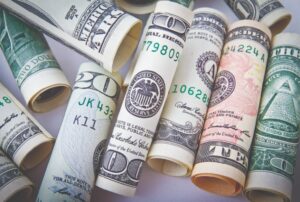 Retail forex day traders use Forex analysis to decide whether to purchase or sell currency pair decisions. Using resources such as charting software can be technical in nature. Using economic indicators and/or news-based reports may also be fundamental in nature.
Retail forex day traders use Forex analysis to decide whether to purchase or sell currency pair decisions. Using resources such as charting software can be technical in nature. Using economic indicators and/or news-based reports may also be fundamental in nature.
What kind of Forex Market Analysis is out there?
To a new forex trader, research may seem like an ambiguous notion. But it falls into three basic forms, actually.
 Fundamental Analysis
Fundamental Analysis
In order to evaluate developments in the forex market, fundamental analysis is also used by monitoring statistics such as interest rates, unemployment rates, gross domestic product (GDP) and other forms of economic data coming from countries. A trader carrying out a fundamental analysis of the EUR/USD currency pair, for example, would find details on interest rates more useful in the Eurozone than those in the U.S. In order to measure the connection to the health of their economies, these traders will also want to be on top of any important news releases coming out of each Eurozone country.
Technical Analysis
Technical research takes the form of manual processes as well as automated systems. Usually, a manual method suggests that a trader analyzes technical indicators and interprets that knowledge into a decision to buy or sell. An automated trading analysis implies that the trader is “teaching” the program to search for and interpret those signals to execute buy or sell decisions. Where automated analysis could have a benefit over its manual equivalent, it is intended to exclude trading decisions from behavioral economics. To assess where a given currency might be going, Forex systems use past price movements.
Weekend Analysis

For doing a weekend analysis, there are two simple explanations. The first explanation is that you want to build a “big picture” view of a specific market you are interested in. Since the markets are closed over the weekend and not in volatile flux, you don’t need to respond to circumstances as they unfold, but you can, so to speak, survey the landscape.
Secondly, you will be supported by the weekend review to set up your trading plans for the coming week and to build the required mindset. An overview of a weekend is equivalent to an architect designing a plan to create a building to ensure a smoother implementation. Tempted, without a strategy, to trade? You can leave a hole in your pocket by shooting from the waist without a strategy.
Applying the technique
After going through and understanding the techniques available, it is very important to know how does one apply it. Let us look at the few basics to consider when applying the techniques.
- Understanding the core drivers
In part, the art of effective trade is due to an awareness of the existing relationships between markets and the reasons for the nature of those relationships. Remembering that these relationships can and do change over time, it is necessary to get a sense of causation.
A stock market recovery, for instance, could be clarified by investors who expect an economic recovery. These investors expect that businesses in the future will have increased profits and, thus, higher valuations, and so it is a good time to buy. Speculation, however, could boost momentum based on a flood of liquidity, and good old greed drives prices higher before larger players are on board so that the selling can begin.
It is always good to ask questions such as, “What is happening?” “Why are these things happening?” “What is pushing the market?”.

- Why chart indexes?
For a longer time frame, it is beneficial for a trader to chart the relevant indexes for each market. This exercise will assist a trader in evaluating the relationships between markets and whether or not a trend in one market is in reverse or in concert with the other.
In 2009, for example, gold was pushed to record highs. Was this change a reaction to the belief that paper money decreased in value so quickly that it was necessary to return to the hard metal or was this the result of a commodity boom fueling cheap dollars? The response is that it may have been both or, as we discussed above, speculation-driven market movements.
- Exploiting the Consensus of other markets

We may obtain a view on whether or not the markets reach a consensus on a turning point by mapping other instruments on the same weekly or monthly basis. We may take advantage of the consensus from there to enter a trade in an instrument that will be driven by the turn. For example, if an oversold position is suggested by the USD/JPY currency pair and that the Bank of Japan (BOJ) might intervene to weaken the yen, Japanese exports could be affected. A Japanese recovery, however, without any weakening of the yen, is likely to be impaired.
- Timing is of an essence
If one can find turning points on the longer timeframes, then switch down to a shorter time period to fine-tune an entry, there is a much greater chance of a successful trade. As shown on the longer-term chart, the first trade can be at the exact Fibonacci level or double bottom, and if this fails, a second chance will often occur on a pullback or support level test.
Without any preparation or analysis of multiple forex indicators, patience, discipline, and preparation will set you apart from traders who simply trade on the fly.
Understanding Forex Trading Systems and Strategies

The currency trading method of a day trader may be implemented manually, or the trader may use automated forex trading strategies that combine technical and fundamental research. These are accessible for free, for a charge, or more tech-savvy traders can build them.
For purchase through the internet, both automated technical analysis and manual trading strategies are available. It is important to remember, however, that, in terms of success, there is no such thing as the “holy grail” of trading systems. If the machine was a money maker that was fail-proof, then the seller would not want to share it. This is demonstrated by how major financial institutions are keeping their “black box” trading systems under lock and key.
To wrap this up
Between technical and fundamental research, there is no “best” analysis approach for forex trading. For traders, the most viable choice depends on their time frame and access to information. For a short-term trader with only delayed economic data information but real-time access to quotes, the preferred approach might be technical analysis.

Alternatively, traders who have access to news stories and economic data up-to-the-minute may prefer fundamental analysis. In any case, when the markets are not in a constant state of fluctuation, it doesn’t hurt to perform a weekend report.
